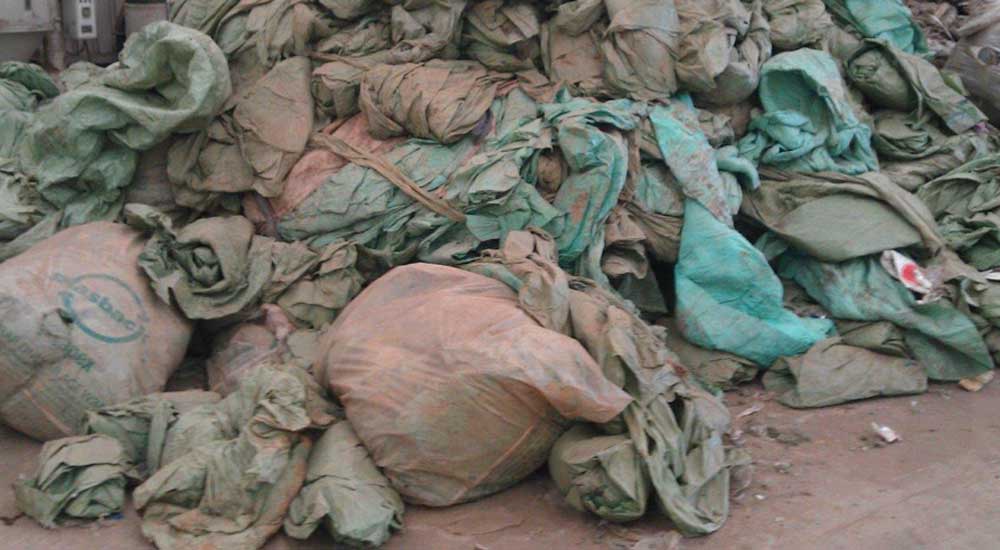Globally, only 4% of plastic films get recycled. The remainder ends up in landfill, is burnt for power generation, or gets flushed into rivers and oceans.
The low recycling rate for plastic films is down to one fact: it’s hard to do. That’s why councils don’t want plastic bags in our home recycling bins, and why the food processing industry – a very large consumer of plastic films – has an environmental headache to deal with.
Filthy Stuff
It isn’t the clean plastic bags that can go into the recycling bins at most supermarkets that we are talking about. It’s all the bags that have been filled with garbage and dropped in our red-top bins. It’s wraps that have been in contact with meat and fish and other foods, and the films used to line grain storage pits, or to make silage down on the farm. The big challenge in plastic film recycling is separating it from the dirty, yucky, smelly mess.
Existing film recycling processes rely on water for cleaning, but it takes up to six litres of water to clean one kilogram of film. Aside from creating another problem waste stream, using large amounts of water isn’t the smart choice in a dry country.
Herding Cats On Speed
This was the problem that David Hodge and his team at Plastic Forests set out to solve. No strangers to developing recycling solutions for other types of waste, they sought to develop a dry cleaning process. It turned out that cleaning contaminated plastic films was the hardest problem they had ever confronted. “It’s like trying to herd cats on speed,” David says.
It took three years to work through all the ‘unknown unknowns’ and develop a process that would work on an industrial scale. Films go through a number of steps to remove contaminants ranging in size from shopping trolleys and steel cans through to ‘micro-contaminant’ food residues and right down to molecular contaminants.
A Green Mongrel
So, film cleaned, then what? Some of the film is processed into the standard plastic pellets used in plastics manufacturing. They could turn up in anything from flower pots to garbage bags. Pellets are a commodity, with the price set by the market, but demand is high and just one of Plastic Forest’s customers would take 90% of their production.
Pellets are the bottom end of the market, so to add further value Plastic Forests developed the cheekily-named ‘Green Mongrel’ brand of cable cover, garden edging and root guard. These are all fairly thick products, so are easier to manufacture. But the holy grail of recycling is creating a true closed loop, turning old garbage bags into new garbage bags, for example, or old grain pit liners into new liners. This is the next phase for Plastic Forests, and it is attracting the attention of large multinational food companies and major packaging suppliers.
“There’s a lot of green smoke in recycling which leads to a lot of scepticism,” says David, “but now that we are up and running and able to demonstrate our technology, the international response has been unbelievable. We have been contacted by the United Nations Division of Technology, Industry and Economics Environment Programme and were recently named in the top five waste management stories world-wide in 2014, by Eco-Business magazine.”
Plastic Forests has been subjected to supplier due diligence site inspections by several large multinational companies, and has come through with flying colours. It is actively working with a major packaging giant to help develop a range of solutions for their customers.
Commercially Viable On Its Own Terms
It is one thing to generate interest, and quite another to generate revenue. Many other plastic recycling schemes rely on sponsorship by product manufacturers or the ‘green dollar’ to be viable, but not Plastic Forests.
“Yes, we solve an environmental problem for food processing companies, but most of them won’t pay extra just for that,” says David. With landfill currently costing $200-$400 per tonne, Plastic Forests needs to charge less than that to take waste films off customers’ hands. That covers the preparation and transportation costs, but the sale of recycled pellets and the ‘Green Mongrel’ lines are the major sources of income.
Plastic Forests was originally set up to handle the contaminated films coming from mixed municipal waste, but following changes in the relationship with an advanced waste treatment facility in Sydney, that source of material dried up. However, with so much contaminated plastic out there, new sources haven’t been hard to find. Just four companies can fill the current capacity of 120-150 tonnes per week, and David is now looking to add another production line. With growing interest and demand, he will be looking to external sources to help fund an expansion of capacity.
Philosophically Drive
David cites Chris Martenson of Peak Prosperity* as an influence on this thinking. “I’m not an enemy of plastic,” he explains. “Many food producers and processors can’t operate without plastic film. But we need to use it better and keep plastic as plastic. In Europe a lot of waste is burnt to produce energy, but the plastic component of that is just another form of fossil fuel.”
Another philosophical difference between Plastic Forests and many other technology-driven recycling companies is that it hasn’t patented its intellectual property. The company aims to remain the market leader, but David believes there are benefits to having others follow them. It will make for a stronger industry overall. And with 96% of the world’s plastic film production going to landfill, incineration or polluting the environment, Plastic Forests is an important part of the solution.

